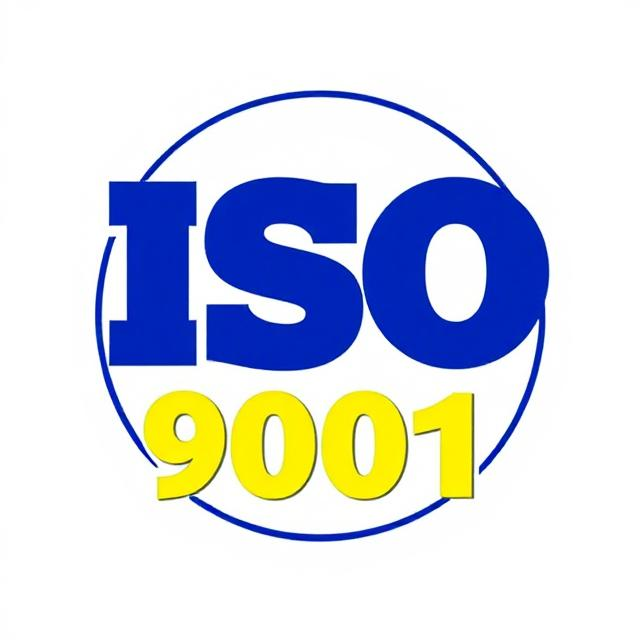ISO 9001 is an internationally recognized standard that outlines the requirements for a QMS. It emphasizes a process-oriented approach, focusing on continuous improvement and customer satisfaction. Training in ISO 9001 ensures that your team understands these principles and can apply them effectively within your organization.
The Tangible Benefits of ISO 9001 Training
1. Enhanced Product and Service Quality
Training empowers employees to identify inefficiencies and implement improvements, leading to higher quality outputs. This proactive approach minimizes errors and ensures that products and services meet or exceed customer expectations.
2. Increased Customer Satisfaction
A well-implemented QMS, supported by trained personnel, leads to consistent delivery of quality products and services. This consistency builds trust and satisfaction among customers, fostering loyalty and positive word-of-mouth
3. Streamlined Processes and Efficiency
Employees trained in ISO 9001 principles can better understand and optimize organizational processes. This leads to reduced waste, improved resource utilization, and more efficient operations overall.
4. Improved Risk Management
ISO 9001 training includes identifying potential risks and implementing preventive measures. By anticipating and addressing issues before they escalate, organizations can maintain stability and avoid costly disruptions.
5. Better Audit Preparedness
Trained employees are more adept at maintaining documentation and adhering to procedures, making audits smoother and more successful. This preparedness not only facilitates certification but also reinforces a culture of accountability.
Implementing ISO 9001 Training: A Strategic Approach
To maximize the benefits of ISO 9001 training, organizations should adopt a structured approach:
- Assess Training Needs: Identify gaps in knowledge and skills related to quality management.
- Develop a Training Plan: Create a comprehensive plan that includes objectives, methods, and timelines.
- Engage Qualified Trainers: Utilize experienced professionals who can provide practical insights and real-world applications.
- Monitor and Evaluate: Regularly assess the effectiveness of training programs and make necessary adjustments.
Real-World Impact: Case Studies
Organizations across various industries have witnessed significant improvements after implementing ISO 9001 training:
- Manufacturing Sector: Companies have reported reduced defect rates and increased production efficiency.
- Service Industry: Businesses have achieved higher customer satisfaction scores and improved service delivery times.
- Healthcare: Hospitals have enhanced patient care quality and compliance with regulatory standards.
Why Training Beats Just Reading the Manual
Sure, you could hand someone the ISO 9001 standard and hope for the best. But let’s be honest — that’s a bit like giving someone a car manual and expecting them to rebuild an engine. Reading the framework doesn’t magically transfer understanding. That’s where training becomes powerful.
When your team gets trained — whether through workshops, online courses, or on-site sessions — they’re not just absorbing information. They’re engaging with it. They’re asking questions like, “How does this apply to our process?” or “What should we do differently?” That engagement turns passive reading into actionable knowledge. It gives people the confidence to apply what they’ve learned and the clarity to do it well.
Plus, let’s face it — most teams have their own quirks. Your customer service department isn’t identical to someone else’s. Training helps contextualize ISO 9001’s general principles into your very specific reality. That’s when things start to click.
Who Actually Needs the Training?
Now here’s a common pitfall — assuming only management or the quality team needs ISO 9001 training. Nope. That mindset will trip you up faster than a wet floor with no sign.
While yes, your quality manager and department heads absolutely need deep, focused training, the truth is that everyone plays a role in quality. Think about it:
- Frontline employees are closest to the work. If they don’t understand the “why” behind the process changes, things get missed.
- Customer service reps hear complaints first. Shouldn’t they understand how the QMS handles feedback?
- Logistics and purchasing teams need to understand supplier quality and traceability standards.
Training isn’t just a top-down thing. It’s across-the-board. The more people understand the language and principles of ISO 9001, the easier it becomes to embed quality into your culture — not just your paperwork.
Common Misconceptions About ISO 9001 Training
Let me clear the air on a few things — because misinformation is everywhere when it comes to ISO standards.
1. “We’re already certified. Why train again?”: Certification isn’t a finish line. It’s a license to keep improving. People leave, new hires join, and processes change. Without ongoing training, your QMS becomes stale and disconnected from real-life operations.
2. “It’s only useful before an audit.”: Wrong again. Sure, training helps you pass audits, but its real power is in making your operations run smoother all year round. An audit-ready organization is usually just a well-run one, period.
3. “It’s too technical for non-quality staff.”: The truth? Good ISO 9001 training breaks it down into plain language. It’s not about memorizing clauses; it’s about understanding the purpose behind them. When done right, even the most jargon-averse team member can see where they fit in.
Making It Stick: How to Keep ISO 9001 Training from Fading Away
We’ve all been there — a big training push, followed by… well, nothing. That initial excitement fades, and people go back to their old ways. So how do you make training stick?
Make it practical. Use real examples from your business. Don’t just talk theory — show how a clause affects their daily work.
Reinforce it over time. One-off training doesn’t cut it. Build in refreshers, quick quizzes, or weekly process huddles.
Encourage peer sharing. When someone improves a process thanks to ISO principles, let them share the story. It boosts morale and spreads know-how.
Integrate it into onboarding. New hires should understand quality expectations from day one, not six months later during an audit scramble.
The Ripple Effect on Your Business
Let’s take a step back and look at the bigger picture. Quality improvements don’t stay neatly in one department. They ripple out across the whole business.
Think about this: A well-trained production team reduces defects. That means fewer returns. Fewer returns mean your customer service team isn’t swamped. Your sales team gets to focus on growth instead of damage control. Your brand reputation gets stronger. It’s a chain reaction — and ISO 9001 training is often the first domino.
Now let’s say your suppliers are also trained or at least held to ISO 9001 standards. You reduce variability at the source. Suddenly your materials arrive on time, to spec, and with less drama. That steadiness builds into your system and becomes something customers can feel.
And here’s the kicker — in many sectors, clients are starting to expect ISO certification. It becomes a trust signal. They know they’re not walking into chaos. So by investing in training, you’re not just tightening internal operations. You’re boosting external credibility.
Virtual vs. In-Person Training: What Works Best?
We live in a hybrid world now. Online learning isn’t just accepted — it’s often preferred. But does that mean virtual ISO 9001 training is always better? Not necessarily.
Here’s the deal:
- Virtual training offers flexibility. Employees can learn at their pace, rewind tricky bits, and train from anywhere. Great for theory-heavy material or when teams are spread across locations.
- In-person training builds engagement. It’s more interactive, encourages live questions, and often sticks better because it’s hands-on.
Honestly, a blended approach works best for most companies. Start with online modules to build a foundation. Then bring people together for workshops, scenario exercises, or audits where they can apply what they’ve learned.
And if you’re working with a consultant or trainer, ask them to customize examples to your industry. Generic training is forgettable — tailored content resonates.
Final Thoughts: Quality Isn’t a Department — It’s a Culture
Here’s something that often gets lost: ISO 9001 training isn’t about enforcing more rules. It’s about showing people how their everyday work contributes to something bigger — customer trust, brand strength, operational excellence.
When your people understand that, when they can connect a seemingly small step in a process to a larger outcome, quality stops feeling like someone else’s job. It becomes part of the rhythm of your business.
So if you’re wondering whether ISO 9001 training is worth the effort? Ask yourself this: Can your business afford inconsistent quality, frustrated customers, or inefficient processes? Probably not.
Train your people. Empower them. Build a system that doesn’t just aim for quality, but lives it. The returns aren’t always immediate — but they’re always worth it.







0 Comments